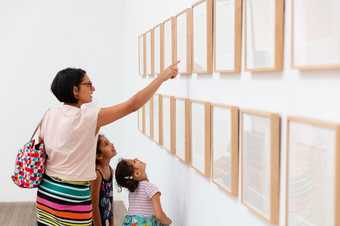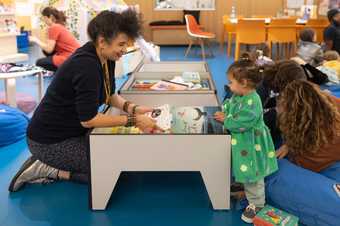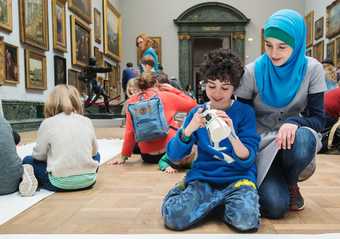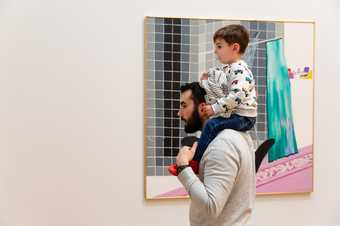
© Rikard Österlund
Where do we start?
When you visit Tate Britain you can learn about the story of British art from 500 years ago to the present. Have a go at finding these great artworks on your trip, and see what else you discover along the way. These are starting points to help you plan your visit as a family. Have fun and share your favourites with us on social media using #TateKids.
For more information about where to eat, drink and relax while you're here, read our top tips for visiting Tate Britain as a Family. Download our map [851 kb] to help find your way.
1. See Double
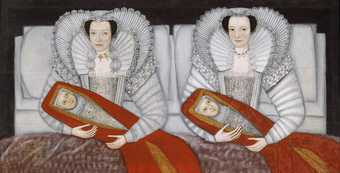
Unknown artist, Britain
The Cholmondeley Ladies
(c.1600–10)
Tate
Where is it? 1545 Room, Walk through British Art, Main Floor
This is a painting by an unknown artist, painted over 400 years ago. Look closely at the two women in the painting. They are sitting up in bed, fully dressed. When you first see the painting, you might think the pair of women and the pair of babies look the same.
What differences can you find between them? Look closely at their eyes, clothes and jewellery.
Do you think the Cholmondeley ladies were pleased with their portrait?
2. Imagine a future
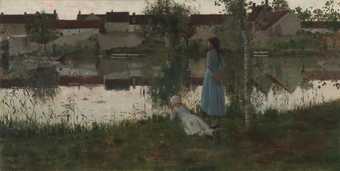
William Stott of Oldham
Le Passeur (The Ferryman) 1881
Where is it? 1812 Room, Walk through British Art, Main Floor
Le Passeur (The Ferryman) was painted in 1881 by British artist William Stott of Oldham in Grez-sur-Loing, an international artists' colony in north central France. Depicting two young female figures at dusk, the subject of the work might refer to Charon, the ferryman of Greek mythology who crosses the river Styx.
Spend some time looking at and thinking about this artwork. Imagine you are on the banks of the river gazing across the water...
What do you think the figures are looking at? What might they be thinking about? How would you describe the mood of this painting? Does it affect your mood?
Hear two young women from London talk about childhood and their dreams for the future inspired by this artwork - Sonic Trail: The Crossing (produced by Gaylene Gould and Ain Bailey with the Early years and Families team).
3. Make An Assemblage
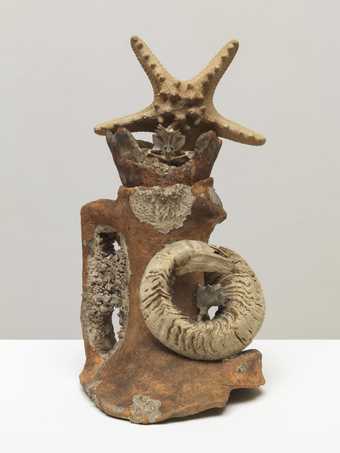
Eileen Agar
Marine Object
(1939)
Tate
Where is it? 1920 Room, Walk through British Art, Main Floor
Take a walk around this artwork and view it from different angles and heights.
What’s it made of? Where do you think the objects were found?
Artist Eileen Agar did lots of travelling by the sea and in the countryside, looking out for interesting objects and items from nature. This assemblage is made from objects she collected at different times in different places.
Can you make an artwork with objects you find today? What title will you give it?
Learn more about Eileen Agar on Tate Kids
4. Strike a pose
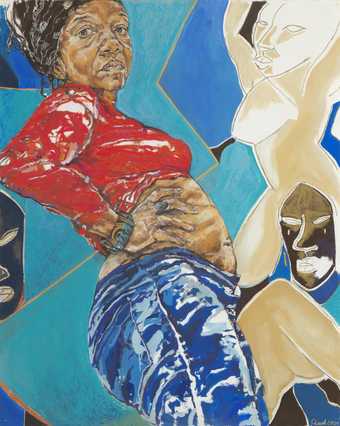
Claudette Johnson, Standing Figure with African Masks, 2018 © Claudette Johnson
Where is it? Sixty Years Display: The Unfinished Conversation, Main Floor. This display addresses themes of racism. Some of the artworks depict acts of violence and contain strong language.
Stand in front of this artwork as if you've encountered this person in the street. Where is the person looking? What are your first impressions of them? This is an image of the artist that Claudette Johnson made by placing a small mirror on a chair.
How would you describe their pose and expression? Compare this to the artwork hanging to the left of this work. How are they similar? Try copying their poses.
Look at what else is going on in this artwork. Why do you think the artist has included the African mask figures? They've been copied from a famous artwork by Pablo Picasso called Les Demoiselles d'Avignon.
5. Take a Stand
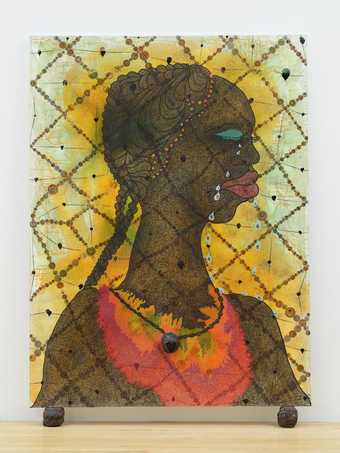
Chris Ofili CBE
No Woman, No Cry
(1998)
Tate
Where is it? Sixty Years Display: The Unfinished Conversation, Main Floor. This display addresses themes of racism. Some of the artworks depict acts of violence and contain strong language.
Try looking at this painting from far away and up close. What materials and details do you notice close up?
Inside each teardrop falling from the woman's face is a photograph of her son. The woman in the painting is Baroness Doreen Lawrence, whose son Stephen Lawrence was killed in 1993, the victim of a racist attack. An inquiry found that the police didn't handle the investigation properly due to racism within the police force.
The title of this painting is also the name of a 1974 song by the musician Bob Marley. Why do you think the artist chose this as a title?
What do you think about using art to take a stand? Can you think of an issue you care about and an artwork you’d like to make about it?
Learn more about Chris Ofili on Tate Kids.

